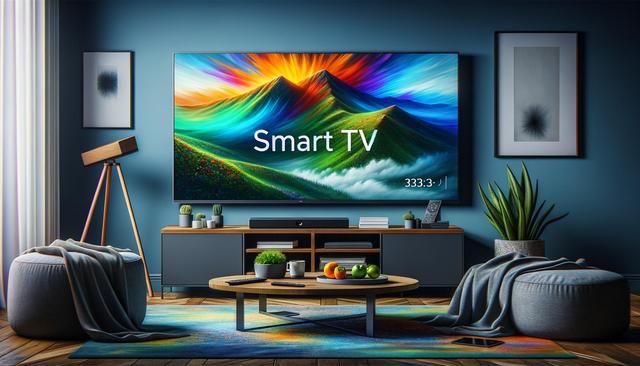What is a Smart TV?
A smart TV is a modern television that integrates internet connectivity and interactive features, allowing users to stream content, browse the web, and access apps directly from their TV. Unlike traditional televisions that rely solely on cable or satellite, smart TVs operate similarly to smartphones or tablets by running on an operating system. This system enables users to download and use a variety of applications, from video streaming platforms to social media and even productivity tools. Most smart TVs come equipped with built-in Wi-Fi, making it easy to connect to your home network without the need for additional hardware.
Smart TVs are available in a wide range of screen sizes and display types, including LED, OLED, and QLED. They also support high-definition and ultra-high-definition resolutions, contributing to an immersive viewing experience. With smart TVs, users no longer need external devices like streaming sticks or set-top boxes to access internet-based content, as everything is integrated into the TV itself.
Key Features of Smart TVs
One of the most attractive aspects of smart TVs is their extensive range of features that go beyond conventional viewing. These include:
- App Integration: Access to a wide array of applications for streaming, gaming, and news.
- Voice Control: Many models support voice assistants, allowing users to control the TV using voice commands.
- Screen Mirroring: Users can mirror content from their smartphones or tablets directly onto the TV screen.
- Personalized Recommendations: Smart algorithms suggest content based on viewing habits.
- Multi-Device Connectivity: Seamlessly connect the TV with other smart home devices.
These features provide a more personalized and convenient entertainment experience. For instance, voice control makes it easier to search for content without using a remote, and app integration ensures that users can switch between different types of media effortlessly.
Advantages Over Traditional TVs
Smart TVs offer several advantages over traditional televisions. One of the most significant is the ability to access on-demand content without needing a separate device. This eliminates the clutter of multiple remotes and cables. Additionally, smart TVs are often updated with new features through software upgrades, keeping the device current without needing a complete replacement.
Another notable benefit is the interactive nature of smart TVs. Unlike traditional TVs, which are primarily passive devices, smart TVs allow for two-way interaction. This means users can participate in live polls, comment on social media, or even video call directly from their television screen.
Moreover, smart TVs can enhance productivity. Some models support video conferencing apps, making them useful for remote work or family catch-ups. With screen mirroring and internet access, they can also be used for presentations or educational content.
Setting Up and Using a Smart TV
Setting up a smart TV is generally straightforward. After unboxing, the TV typically guides users through a setup wizard that connects it to Wi-Fi, updates the software, and signs into app accounts. Most smart TVs have intuitive interfaces that resemble those of smartphones or tablets, making navigation familiar and easy.
To make the most out of a smart TV, users should:
- Connect it to a stable internet connection for uninterrupted streaming.
- Regularly update the software for new features and security patches.
- Explore the app store to find useful and entertaining applications.
- Link it to other smart devices for a fully connected home experience.
Parental controls are also available on most smart TVs, allowing guardians to manage what content their children can access. This makes smart TVs a family-friendly option when used responsibly.
Considerations Before Purchasing
Before buying a smart TV, there are several factors to consider to ensure it suits your needs. Screen size is one of the most important aspects and should be chosen based on the size of the room. Display technology and resolution also matter, especially for those who value picture quality.
Another key consideration is the operating system the smart TV uses. Some systems offer a broader range of apps and better user experience than others. It’s also useful to read reviews and check compatibility with other devices in your home, such as smartphones, speakers, and game consoles.
Other features to look for include:
- Number and type of HDMI and USB ports
- Support for HDR (High Dynamic Range)
- Audio quality and speaker configuration
- Availability of voice assistant integration
Considering these factors helps in selecting a smart TV that not only fits your budget but also meets your specific entertainment and connectivity needs.
Conclusion
Smart TVs have transformed the way people consume media, offering a dynamic blend of traditional and internet-based content in one device. With features like app integration, voice control, and seamless connectivity, they provide an enriched user experience that caters to a broad range of preferences and lifestyles. Whether you’re a movie enthusiast, a casual viewer, or someone looking to integrate your TV into a smart home ecosystem, exploring the capabilities of a smart TV can significantly enhance your home entertainment setup.






